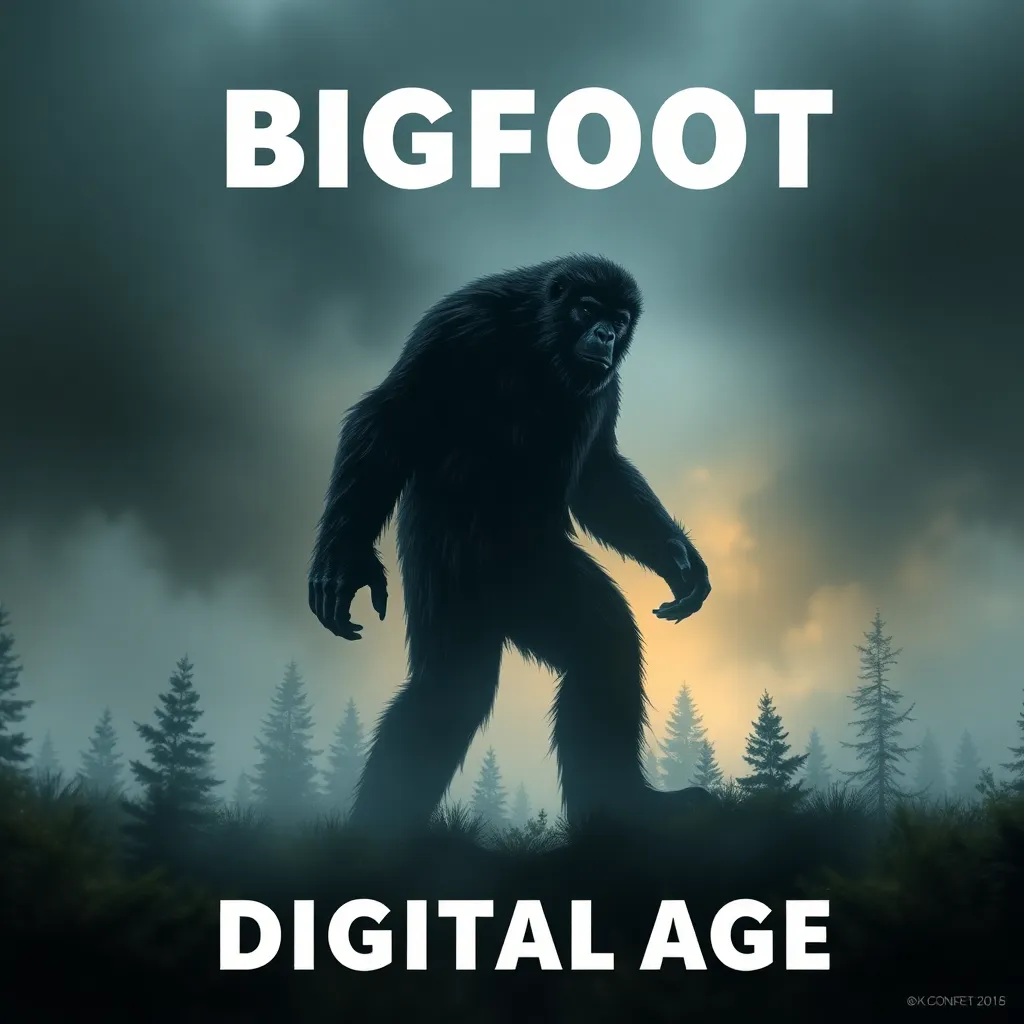Bigfoot in the Digital Age: Online Communities and Social Media
I. Introduction
Bigfoot, often depicted as a large, hairy, ape-like creature, has become an iconic figure in American folklore. Its mythology is deeply rooted in cultural narratives, capturing the imagination of many who are fascinated by the possibility of undiscovered creatures lurking in the wilderness. The legend of Bigfoot serves as a symbol of the unknown, representing humanity’s longing for mystery and adventure.
As we have entered the digital age, the ways in which people engage with the Bigfoot phenomenon have evolved significantly. Traditional methods of research and discussion have transitioned into vibrant online communities, where enthusiasts share sightings, theories, and evidence. This article aims to explore the impact of these online communities and social media on Bigfoot culture, examining how they have transformed the landscape of Bigfoot research and engagement.
II. The Rise of Online Communities
In the early days of Bigfoot enthusiasm, interested individuals often gathered in person at conferences, seminars, and local meet-ups. These traditional gatherings fostered a sense of community but were limited by geography and accessibility. However, with the advent of the internet, a significant shift occurred.
Online platforms have allowed enthusiasts from around the world to connect, share information, and collaborate on research. Some of the key developments include:
- Early Forums and Websites: Websites dedicated to Bigfoot research began to emerge in the late 1990s and early 2000s, providing a space for discussion and information sharing.
- Social Media Groups: Platforms such as Facebook have spawned numerous groups where members can post sightings, share photographs, and discuss their findings.
- Blogs and Vlogs: Many Bigfoot enthusiasts have taken to blogging or vlogging, allowing them to present their research and theories to a broader audience.
III. Social Media Platforms and Bigfoot Culture
Social media has played a pivotal role in the dissemination of Bigfoot culture. Various platforms have become hotspots for discussions, sightings, and research. Notable platforms include:
- Facebook: Numerous groups and pages are dedicated to Bigfoot, allowing users to share experiences and findings.
- Twitter: The use of hashtags such as #Bigfoot and #Sasquatch helps to aggregate discussions and sightings.
- Instagram: Visual content, including photographs and artwork related to Bigfoot, thrives on this platform.
The emergence of hashtags and trending topics has amplified discussions about Bigfoot, enabling viral content to spread rapidly. Case studies of viral Bigfoot content highlight the power of social media in shaping public interest and engagement:
- A viral video claiming to show Bigfoot walking through a forest.
- Posts featuring purported evidence of Bigfoot footprints.
- Memes and humorous content that keep Bigfoot in public discourse.
IV. Citizen Science and Crowdsourcing Information
Online communities have revolutionized the way Bigfoot research is conducted. Many enthusiasts have embraced the concept of citizen science, where non-professionals contribute to scientific research efforts.
These online communities facilitate collaboration in various ways:
- Data Collection: Members of online forums and social media groups share sightings and evidence, creating a collective database.
- Analysis: Enthusiasts often collaborate on the analysis of video footage, photographs, and audio recordings.
Successful examples of crowdsourced Bigfoot expeditions have emerged, where groups of enthusiasts come together to investigate reported sightings, using technology and shared resources to document their findings.
V. The Impact of Video and Live Streaming
YouTube has become a leading platform for Bigfoot enthusiasts, providing a space for documentary-style videos, sighting compilations, and personal narratives. The rise of video content has significantly impacted how the Bigfoot phenomenon is perceived.
Live streaming events have also gained popularity, allowing enthusiasts to engage in real-time discussions and investigations. These events create a sense of community and immediacy, enabling participants to witness purported Bigfoot activity as it occurs.
User-generated content has implications for Bigfoot credibility, as the line between genuine evidence and hoaxes is often blurred. Viewers are encouraged to critically assess the validity of the content they encounter.
VI. Debunking Myths: Misinformation and Hoaxes
While online platforms have facilitated the sharing of valuable information, they have also contributed to the spread of misinformation within the Bigfoot community. Numerous hoaxes have emerged, casting doubt on the credibility of genuine research.
Notable hoaxes include:
- The 2008 “Bigfoot body” hoax, where individuals claimed to have found a deceased Bigfoot, only to reveal it as a costume.
- Various manipulated images and videos that circulate on social media, misleading enthusiasts.
As misinformation spreads, the importance of critical thinking and fact-checking in online discussions cannot be overstated. Enthusiasts are encouraged to verify sources and approach new findings with skepticism.
VII. The Future of Bigfoot Research in the Digital Landscape
The future of Bigfoot research in the digital age is poised for exciting developments. Predictions for the evolution of online communities suggest:
- Increased collaboration across platforms, leading to a more unified approach to research.
- Utilization of emerging technologies, such as artificial intelligence and virtual reality, to enhance research methods and engagement.
As digital culture continues to evolve, its lasting influence on the perception of Bigfoot will shape how future generations understand and engage with this enduring mythos.
VIII. Conclusion
The significance of online communities and social media in Bigfoot culture is undeniable. These platforms have transformed how enthusiasts connect, share information, and conduct research, fostering a global community united by curiosity and a passion for the unknown. The intersection of myth, technology, and community in the digital age offers exciting possibilities for future exploration.
As you engage in Bigfoot discussions online, remember the importance of critical thinking and collaboration. Your contributions to ongoing research can help uncover the truth behind the legend of Bigfoot, ensuring that this captivating story continues to thrive in the digital landscape.




